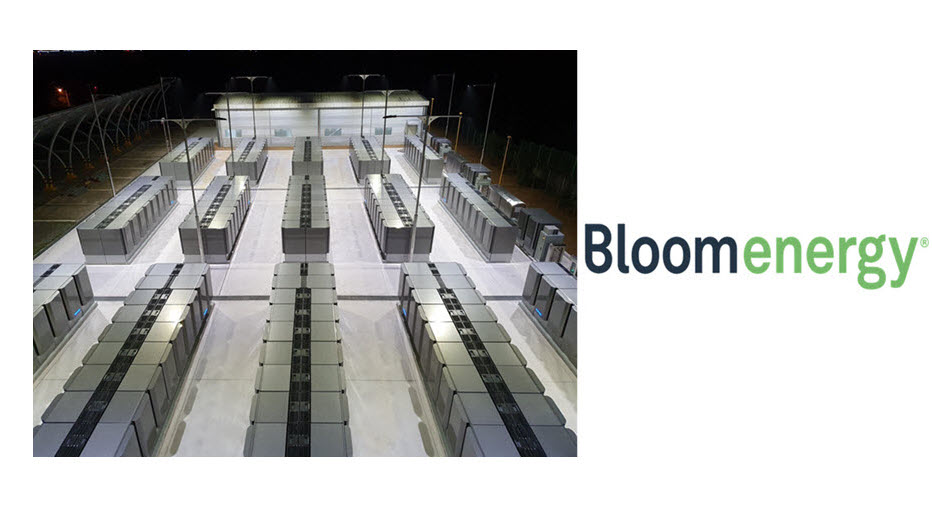
Bloom Energy and Shell have teamed up to explore solutions for decarbonization, with a focus on Bloom's innovative solid oxide electrolyzer (SOEC) technology. This collaboration has the potential to significantly reduce greenhouse gas emissions, especially in hard-to-abate industrial sectors, marking a crucial advancement in the battle against climate change.

Understanding the Collaboration
Bloom and Shell are working together to create large-scale, easily reproducible SOEC systems for hydrogen production. This clean hydrogen can then be used in various Shell facilities, replacing traditional methods that depend on fossil fuels and contribute significantly to carbon emissions. The importance of this collaboration is in its potential to stimulate innovation. By merging Shell's extensive industry knowledge with Bloom's expertise in SOEC technology, the partnership encourages the development and implementation of clean energy solutions on a larger scale.
>> In Company Spotlight: Shell
>> In Other News: Ballard Announces $40 Million in Doe Grants to Support Build-out of Industry-leading Integrated Fuel Cell Production Gigafactory in Rockwall, Texas
Advantages of SOEC Technology
Bloom's SOEC technology offers a distinctive approach to hydrogen production. Unlike the high-carbon 'grey' hydrogen derived from fossil fuels, SOEC utilizes water electrolysis powered by renewable energy sources, leading to the generation of clean 'green' hydrogen and completely eliminating greenhouse gas emissions. Furthermore, SOEC has advantages over other electrolysis technologies. Its high-temperature operation allows for increased efficiency and scalability compared to lower temperature options like PEM (Proton Exchange Membrane) or alkaline electrolysis, resulting in greater hydrogen production per unit of energy input.

Applications in Hard-to-Abate Sectors
In this collaboration, Bloom and Shell are focusing on industries where decarbonization efforts are particularly challenging, such as refineries and heavy manufacturing. These sectors often rely on processes that emit large amounts of carbon dioxide. The use of clean hydrogen produced through SOEC technology offers a viable alternative, allowing these industries to significantly reduce their environmental footprint.
Achieving Lower-Carbon Footprints with Hydrogen
Transitioning to clean energy sources like SOEC-produced hydrogen has the potential to significantly reduce carbon emissions, fostering a more sustainable future. Additionally, as companies adopt these technologies, they can achieve lower carbon footprints, potentially enhancing their brand image and market competitiveness. Widespread adoption of renewable energy sources like SOEC is crucial for ensuring long-term environmental sustainability and combating climate change to protect our planet for future generations.
Decarbonization Challenges and Opportunities
Decarbonizing hard-to-abate sectors poses significant challenges due to existing infrastructure, economic factors, and the necessity for further technological advancements. Nevertheless, the partnership between Bloom and Shell offers promising prospects. Ongoing advancements in SOEC technology and other clean energy solutions can help overcome these obstacles. Additionally, promoting collaboration across industries and with governments is crucial to expedite the development and implementation of these technologies.
Role of Public Policy
Government policies and regulations are crucial in encouraging the widespread adoption of clean energy solutions. Supportive regulatory frameworks can motivate businesses to invest in renewable energy technologies like SOEC, hastening the transition towards a low-carbon economy.
Looking Ahead
The partnership between Bloom Energy and Shell represents a ray of hope in the battle against climate change. By pooling their knowledge and resources, they are laying the groundwork for a greener future. This collaboration underscores the significance of ongoing teamwork, creativity, and financial support for clean energy solutions. Achieving global decarbonization objectives demands a united endeavor from businesses, governments, and individuals. Collaborative efforts like the one between Bloom Energy and Shell showcase the effectiveness of strategic alliances in expediting the advancement and implementation of crucial clean energy technologies. Together, we can build a sustainable future for future generations.
Subscribe to the newsletter
Daily decarbonization data and news delivered to your inbox
Follow the money flow of climate, technology, and energy investments to uncover new opportunities and jobs.
Latest issues
-
How 45Q Credits Revived This Troubled $9B Megaproject
Inside This Issue 💰 How 45Q Credits Revived This Troubled $9B Megaproject 🍁 Commencement of First Phase Operations for a Carbon Capture and Storage (CCS) Project in Canada 🤝 Haffner Energy Secures...
-
The Deal Structure Everyone's About to Copy
Inside This Issue 💼 The Deal Structure Everyone's About to Copy 📈 Exxonmobil Raises Its 2030 Plan – Transformation Delivering Higher Earnings, Stronger Cash Flow, and Greater Returns ⚡ Nextera Wor...
-
Inside XCF Global's $300M Bet to Double U.S. SAF Output
Inside This Issue ✈️ Inside XCF Global's $300M Bet to Double U.S. SAF Output ⚙️ Capsol Technologies Signs MoU with US Utility to Deploy CapsolGT® for Low-carbon Gas Power Generation 🏭 Babcock &...
Company Announcements
-
Clean Planet Technologies (CPTech), part of the Clean Planet Group, has announced that its core pyrolysis-oil upgrading process has now been formally patented in both the United States and Saudi Ar...
-
(December 12, 2025 - Oslo, Norway) Nel ASA (Nel, OSE: NEL) is pleased to announce that following a seven-year development program, and now a successful start-up and production of clean hydrogen on ...
-
Hydrogen Technology Venture Launches in Bowling Green
BOWLING GREEN, Ky. — A new tech company is coming to Bowling Green, bringing dozens of jobs to Warren County. What You Need To Know UFS ARK will be a joint venture of United Fiber Sensing and OgM...
-
HyOrc Positions Green Methanol as the Economic Solution to Shipping’s Decarbonization Challenge
HOUSTON, Dec. 12, 2025 (GLOBE NEWSWIRE) -- HyOrc Corporation (OTCID: HYOR), a fully SEC-reporting clean-energy company focused on decarbonizing heavy industry, today commented on the growing global...